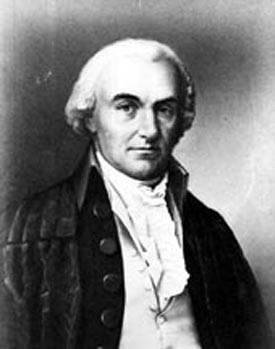 In a recently posted article, The Bill of Rights in Early State Courts, Jason Mazzone discusses the numerous pre-Civil War cases in which state courts held that provisions of the Bill of Rights of the federal Constitution applied to state governments and limited their power. These courts so held although the United States Supreme Court ruled in Barron v. Baltimore (1833) that the Bill of Rights did not apply to the states.
In a recently posted article, The Bill of Rights in Early State Courts, Jason Mazzone discusses the numerous pre-Civil War cases in which state courts held that provisions of the Bill of Rights of the federal Constitution applied to state governments and limited their power. These courts so held although the United States Supreme Court ruled in Barron v. Baltimore (1833) that the Bill of Rights did not apply to the states.I'm not sure that Professor Mazzone's essay works particularly well as a law review article. Given the formal constraints of the law review format, he must advance a thesis. He argues that the state court decisions are reconcilable with Barron because the Supreme Court held in that case only that federal courts could not impose the Bill of Rights on the states; the Supremes did not hold that state courts were barred from doing so.
This is true enough in a technical sense, I suppose. However, as Professor Mazzone himself points out, it is possible to so construe Barron only because of one-way nature of Section 25 of the original Judiciary Act of 1789, which provided in relevant part:
SEC. 25. And be it further enacted, That a final judgment or decree in any suit, in the highest court of law or equity of a State in which a decision in the suit could be had, . . . where is drawn in question the validity of a statute of, or an authority exercised under any State, on the ground of their being repugnant to the constitution, treaties or laws of the United States, and the decision is in favour of such their validity, . . . , may be re-examined and reversed or affirmed in the Supreme Court of the United States upon a writ of error . . ..
In other words, the original Act granted the Supremes jurisdiction where a state court had held that a state law did not violate the federal Constitution; it did not grant jurisdiction where a state court had held that a state law did violate the federal constitution.
As a result, there was no mechanism to review state court decisions that applied provisions of the Bill of Rights to the states -- and there is some evidence that at least some of the state courts understood this. In this sense, the Supreme Court could not, by definition, require state courts to follow its decision in Barron. On the other hand, I do not think that Professor Mazzone's analysis demonstrates that Barron held, in effect, "We're ruling that federal courts cannot impose the Bill of Rights on the states, but you guys in the states should go out and do whatever you like." So far as I can tell, the Supremes were opining was that the Bill of Rights, properly construed, did not apply to the states, period.
Nonetheless, as history the article is wonderful. Both Michael Kent Curtis and Akhil Amar have pointed out this tendency in pre-War state cases, and I have posted some entries looking at decisions of Justices Joseph Henry Lumpkin and Eugenius Aristides Nisbet of the Supreme Court of Georgia advancing the view that provisions of the Bill of Rights were at the very least "declaratory" of those fundamental principles that bound all governments, state as well as federal. Professor Mazzone shows that there were scores or hundreds of such decisions across the country. The Supreme Court of Georgia may have been the leading practitioner of this school of thought, but it was not alone.
By noting the widespread nature of the phenomenon, the article butresses Michael Kent Curtis's thesis that many Republicans debating Section 1 of the proposed Fourteenth Amendment simply assumed that the Bill of Rights already applied to the states. Rep. John A. Bingham seems to have been one of the few members of Congress who realized that Barron held to the contrary. The fact that so many shared this mistaken understanding makes the debates over Section 1 more comprehensible and helps explain the original understanding of the Privileges or Immunities Clause.
Finally, Professor Mazzone laments the present lack of diversity in current interpretation of the federal Constitution. Nowadays, the Supreme Court has jurisdiction to review state court decisions holding that state laws violate the federal Constitition. As a result, the Supremes can impose a uniform federal constitutional interpretation on state courts no matter how the latter rule.
But this lack of diversity in federal constitutional interpretation is offset, I suspect, by an increased application by state courts of state constitutional law. Shopping mall free speech cases are an obvious example. The recent case in which the Florida Supreme Court held that school vouchers violated a provision of the Florida Constitution is another famous (I would say infamous) example.
No comments:
Post a Comment